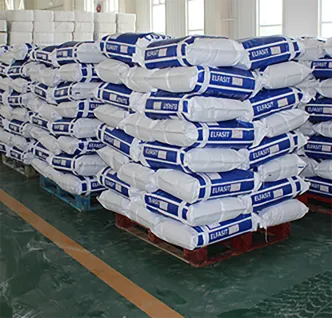
Dec . 13, 2024 04:33 Back to list
Comparing HPMC and HEC for Optimal Formulation in Pharmaceutical Applications
Understanding HPMC and HEC A Comparative Analysis
In the realm of pharmaceuticals, food products, and cosmetics, hydrocolloids play a fundamental role in different formulations. Among these, Hydroxypropyl Methylcellulose (HPMC) and Hydroxyethyl Cellulose (HEC) are two widely used cellulose derivatives. Both of these substances exhibit thickening, binding, and gelling properties, but they possess distinct characteristics and applications that set them apart. This article provides a comparative analysis of HPMC and HEC, focusing on their properties, uses, and benefits.
Chemical Structure and Properties
HPMC is a semi-synthetic polymer derived from cellulose. Its structure includes hydroxypropyl and methyl groups that enhance its solubility in water and improve its thermal stability. The degree of substitution of the hydroxyl groups can vary, giving rise to different grades of HPMC with varying properties such as viscosity and gel strength.
On the other hand, HEC is a derivative of cellulose with hydroxyethyl groups introduced. HEC’s structure allows it to dissolve in both hot and cold water, forming a clear viscous solution. One of the notable properties of HEC is its excellent capacity to retain water, which makes it particularly useful in applications that require moisture retention.
Solubility Characteristics
Both HPMC and HEC are known for their solubility in water; however, their behavior can vary significantly. HPMC is generally soluble in both cold and hot water, but the solubility may depend on the specific grade and the proportion of methyl and hydroxypropyl substitutions. HPMC typically forms a gel when heated in solution and remains stable over a broader pH range, making it versatile for various applications.
hpmc vs hec

Conversely, HEC is particularly valued for its solubility in cold water, which is beneficial in industries where heat may degrade other ingredients. HEC creates a more stable gel compared to HPMC and is less likely to undergo thermal gelation, which is advantageous in formulations where temperature control is critical.
Applications
Pharmaceutical Industry Both HPMC and HEC find applications in the pharmaceutical sector. HPMC is widely used as a controlled-release agent and a binder in tablet formulations, owing to its ability to form gels and control release rates. It is also used in eye drops as a lubricant due to its biocompatibility and non-toxicity. HEC, on the other hand, is primarily employed as a thickening agent in topical preparations and sunscreens due to its superior ability to provide better texture and enhanced spreadability.
Food Industry In food applications, HPMC serves as a stabilizer, emulsifier, and thickener. It is used in items such as bakery products, sauces, and dairy products to improve texture and shelf life. HEC is less common in food applications but can be found in some sauces and dressings due to its emulsifying properties.
Cosmetics and Personal Care HPMC is utilized in various cosmetic formulations, including creams and lotions, to enhance viscosity and provide a smooth feel upon application. HEC also finds a place in hair care products and skin creams, where it acts as a thickener and stabilizer, helping to improve the aesthetic properties of the product.
Conclusion
While HPMC and HEC are both cellulose derivatives with overlapping functionalities, their distinct properties and solubility characteristics make them suitable for different applications across various industries. HPMC's versatility and ability to form gels under heat make it invaluable in pharmaceuticals and food products, whereas HEC’s exceptional solubility in cold water and water-retaining abilities lend themselves well to cosmetic and topical uses. Understanding these differences allows manufacturers to select the appropriate ingredient for their specific formulation needs, ultimately leading to better product performance and consumer satisfaction.
-
Versatile Hpmc Uses in Different Industries
NewsJun.19,2025
-
Redispersible Powder's Role in Enhancing Durability of Construction Products
NewsJun.19,2025
-
Hydroxyethyl Cellulose Applications Driving Green Industrial Processes
NewsJun.19,2025
-
Exploring Different Redispersible Polymer Powder
NewsJun.19,2025
-
Choosing the Right Mortar Bonding Agent
NewsJun.19,2025
-
Applications and Significance of China Hpmc in Modern Industries
NewsJun.19,2025







